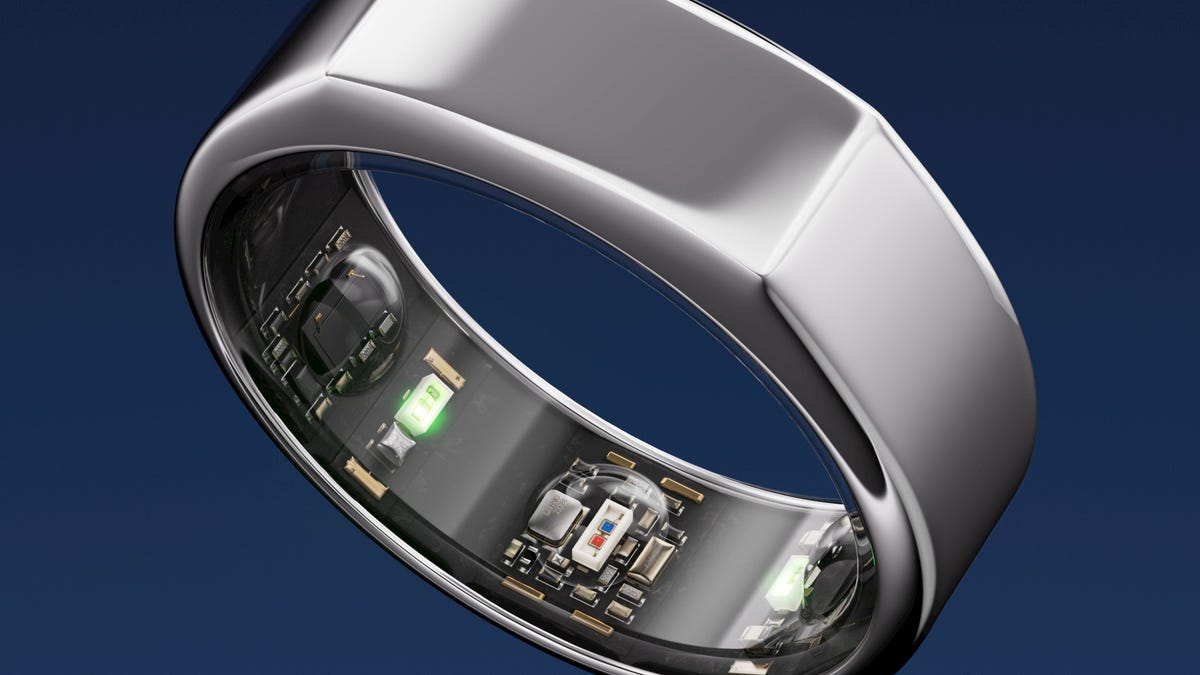The $300 Oura Ring Gen3 improves heart and health sensors, adds subscription fee
The smart ring now has always-on heart rate and better temperature sensors, but also comes with a monthly fee.

The next Oura ring has better heart rate and temperature sensors. Will it be a better always-sensing smart ring?
The Oura Ring, one of the most intriguing health and fitness wearables that I wore last year, is getting an update that promises to better detect heart and temperature fluctuations, plus blood oxygen from your finger. The rings will add women's health tracking, including menstrual cycle prediction. The Oura Ring Gen3, arriving mid-November, costs between $300 and $400 depending on the finish (the titanium rings come in gold, silver and matte shiny black finish). Unlike the earlier models, the new ring needs a $6-a-month subscription to function, pulling a range of health insights and fitness features in the app (with six months free with the ring purchase). Without the subscription it just gives a basic daily "readiness" score (Oura's proprietary metric), with no extra stats.
Subscription fees are becoming a trend in smartwatches and fitness trackers, where monthly add-ons are becoming the norm rather than the exception. Oura CEO Harpreet Singh Rai points to Fitbit's Premium service, Amazon's Halo subscription band and Apple Fitness Plus as paving the way. Oura's subscription fee, according to Singh Rai, will help fund new health research and app content (there are new meditations and other activities coming for the ring). Current Oura Ring owners will be able to buy new rings and use them subscription-free, a move Singh Rai sees as a reward for early adopters.
Oura's latest wearable is an effort to close the gap on allowing wellness-detecting trackers to be able to flag signs of sickness. The previous ring, which measures relative temperature and heart rate changes during sleep, was used by the NBA during its bubbled season last year. For corporations, it can anonymize the wearer's overall risk symptoms and use them as an early preventative flag to possibly prompt them to get a COVID-19 test, or spend a day away from the office to rest up. The company could aim to eventually try for a similar idea with peer groups wearing the Oura ring, too. Meanwhile, the ring's predictive menstrual cycle features are drawn from Oura's research studies on the relationship between temperature, ovulation and pregnancy. (CNET hasn't tried the new Oura ring yet.)
The new ring uses its temperature sensors to predict periods, in addition to giving daily wellness scores.
The last Oura ring was more of an ambient device, designed mostly for sleep tracking, and wasn't all that useful as a daily activity tracker. The new Gen3 ring has a live heart rate tracking feature that works during the day, spot-checks heart rate, shows live heart rate readings during workouts and can track post-workout recovery via the app. The new ring has green and red LED heart rate sensors, similar to other fitness trackers like the Fitbit and the Apple Watch, while the original just had red LEDs.
The Oura Ring Gen3 also improves its heart and temperature sensors, which could also allow the company to pursue further research on how well the device can detect early signs of sickness. The new sensors record significantly more temperature and heart rate data, according to Singh Rai, which could also make the new ring more useful for future university-based health studies. The new ring's battery should last for seven days on a charge (the previous ring lasted about four to five days in my testing), and has a similar minimalist look. It will also check blood oxygen levels, either overnight or with a spot check like many other watches and wearables do, via a software update coming in 2022. Blood oxygen readings don't promise to be medically accurate, but Singh Rai said he believes the ring's location on the finger already makes it a lot more accurate than wrist-based options.
Compared with an Apple Watch, the Oura Ring is a longer-battery-life sleep wearable that can go a week on a charge, and introduces more daily scores for wellness and readiness. The third-gen ring looks to be crossing over into active daily tracking, too, but it also has the types of sleep-and-wellness applications I wish the Apple Watch had a little bit more of.

